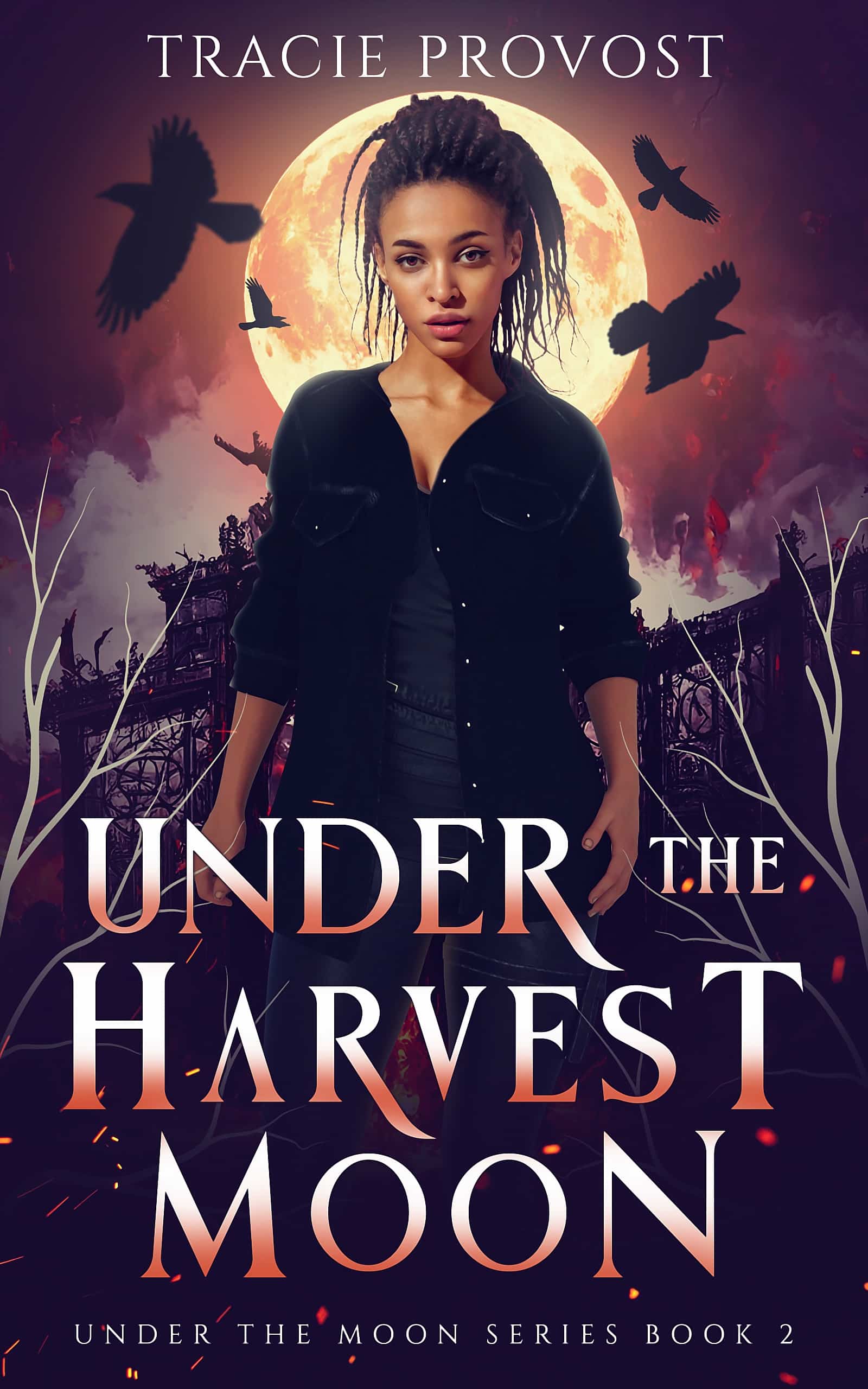When I completed the first draft of my first-ever novel last December, I promptly did a little victory dance.
And then I sat back down and took the word count, which completely killed my buzz. My manuscript rang in at little over 45,000—half the length of your average novel. Eep! I had a minor freakout. What was I going to do?

Fortunately, rationality eventually returned. This was only a first draft, after all. Surely there was some room for development. Turns out, there was tons.
If you find yourself in a similar situation, here are five of the best ways I've discovered to beef up your word count without diluting your story:
1. Pace Yourself
It didn't take me long to notice a recurring issue with pacing in my first draft. There were many scenes where I had a big moment in my head itching to get out, and rushed the buildup. Now that it was all on paper, it was much easier to go back and fill in the missing pieces.
2. Review Your Original Outline
Over the course of the fifteen months that it took me to map out the plot and write my first draft, I'd managed to forget a few pieces of my original plan. Reviewing my outline was a helpful refresher. And it triggered some new ideas, too, pulling together the original concept and the story it matured into.
3. Connect Your Loose Threads
I took some time to think about elements that could complement and enrich what I'd already gotten on paper. There were a few stand-alone scenes that I loved, and when I took the time to think about why, I realized there was a lot of unexplored potential in them that could serve the story well many times over.
4. Support Your Scenes
My first draft drew a pretty straight line start to finish. A happens, then B, then C. It lacked complexity. Where's the fun in that? Close review and some brainstorming gave me new ways to add obstacles into it with smaller events in between the major ones.
5. Create a Crowd with Minor Characters
My hero's a bit of a loner. He's alone for almost all of the story, as told in my first draft. It kept the story tight… too tight, I realized. Some parts of the plot pretty thin with just one character. By forcing him into more interactions with some of my side characters, I was able to make those scenes more dynamic. It also created more conflicting motivations for my hero, upping the tension.
Double Your Word Count
By the time I got through assessing all these different ways to beef up my story, I was psyched about the stronger story that was going to emerge from it, and couldn't wait to get started.
It's taking me about as long to build out as it took to write my entire first draft. Doubling my word count and making all the changes to churn out my story into a full novel is requiring a lot of restructuring. Some scenes have been so cut up and messy they've become full demolition zones.
But when I look back over my reconstructed work, it's clear that a stronger story is emerging, and it's all worth it.
Have you ever come up well short of your word count goal? How did you handle it?
PRACTICE
Is there a place in your work in progress that's reading a little thin? Take fifteen minutes and review it carefully. What's missing from it? Are the stakes high enough? Is the pacing off? Does it require more buildup? What can you do to make it stronger?
Share your observations in the comments to get the feedback of the community.
Joe Bunting is an author and the leader of The Write Practice community. He is also the author of the new book Crowdsourcing Paris, a real life adventure story set in France. It was a #1 New Release on Amazon. Follow him on Instagram (@jhbunting).
Want best-seller coaching? Book Joe here.



i’m working on camp nanowrimo so i’m avoiding editing right now… but i KNOW that i have places that need to be worked on… like the places where i wrote *random stuff happens here* instead of writing out the real scene… #guilty
I know what you mean! I have mixed feelings about Nanowrimo, because of what you’re saying about returning to polish up your work after.
Better write twice as much again… because I can see your editor now rubbing her hands with glee in preparation for some serious slash and burn. Ain’t writing fun!
This is an expanded scene from a story I started earlier this week.
***********************************************
Adam ordered the lasagna and wine and coconut cream pie. He wondered what Laurie would think, if she
saw him here, a month’s worth of carbs in front of him, a bottle of wine. But she was nowhere near; she was where he
left her, at home in Crowley, Arkansas. He
looked at his watch. It was six at
night, on the money. Laurie would be
driving home from work. He wondered if
she’d miss him.
There were only three payments left on the engagement ring he put in
layaway at Chesterfield’s down on the town square. When it was paid off, he was going to take her
to the Lighthouse Inn down by the river, where they had tablecloths and
crystal, and he was going to drop the ring in her champagne glass. Classic, he thought. Only, he didn’t get the chance. He’d walked in on Laurie the night before,
wel,l almost walked in on her.
He had
opened their bedroom door, just barely, and then stopped. She was sitting on the bed, whispering into
her phone.
“If he was like Daddy,” she said. “If he got mad and happy like Daddy did, I
could take it. I really could. But he’s not like Daddy. He’s not like any man I ever met. He’s broody, like an old hen. He’ll sit across from me at breakfast and look
out the window till his coffee gets cold, and when I ask him what’s wrong he’ll
say something like, ‘I was thinking about the hopelessness of man.’
“What the hell does that even mean?”
Whoever was on the other end of the phone, a man Adam
suddenly realized, said something that made Laurie laugh.
“Now, that’s just mean,” she said. She listened for a few seconds and then her
voice turned to velvet. “Yeah,” she
said, “I miss you. Of course I do.”
It felt like he was in the trailer of his Peterbilt, and the
door had been slammed shut, the air cut off.
He walked down the hall. The
light fixture in the kitchen was orange, and it glowed like an announcement
from Florida. Inside the cookie jar on top
of the refrigeration was a thousand dollars in cash. Mad money. He realized he wasn’t mad at all, but seared
like a steak on the grill. He burned
with shame, he was soaked in sorrow.
The hopelessness of man was a concept he’d worked on since
he was in the seventh grade. He soothed
him in a way nothing else did. Once you
gave up the ideal of true happiness, you were set free to seek it. He hadn’t gone to college, but he could see
himself in a classroom explaining his theory to a professor, who would nod and
rub his beard and praise Adam for his brilliance, for his insight into the heart
of the human spirit.
Adam reached up and grabbed the cookie jar; it was a fat
policeman holding a sign that read Stop, and he took the money, ten 100 dollar
bills. He walked out the front door, closed
it behind him, and climbed into his old Chevy truck.
When he gunned the engine, he came alive. He could feel the blood in his temple, the
way his lungs took in air, the way his fingers vibrated on the steering
wheel. The money now was on the
dashboard, below the rearview mirror with a figurine of
Mother Mary dangling
from a string. He turned on the radio to
the country station, where they played the old stuff, music Laurie hated.
Loretta Lynn was singing, and then Hank Williams, and then Porter Wagoner.
In Mt. Judea, the rain started. It hadn’t rained at home in three long months,
and the land was suffering, the temperature reaching 105 for 60 days straight. On the TV, famers cried, ranchers were selling
cattle for next to nothing, since they couldn’t find hay to feed them. But
here, in Mt. Judea, the rain fell, leaving muddy tracks across Adam’s windshield. He rolled down his window to smell it, the
creek water smell filling his lungs. He
let it splash across his face, and soak his shirt. He wanted it to wash him
clean.
I usually write short, so I can really relate to this. You’ve given great ideas of handling the problem – thanks Emily! I recently read an article about how certain pieces of work feel right and should be left as they are, regardless of the word count and the category they should be classified in. If it feels like you’ve said everything and that any changes will just ruin the work, sometimes it may be wise to leave it as it is. Great post!
I’m a little shorter than I’d like to be at the end of my first draft, just over 65,000 words. I’ve debated whether I should add to it. Emily’s tips are great. But I agree with your thoughts on sometimes knowing you’ve said what you need to say. I wonder if I would make a mess if I change it too much.
Perhaps consulting with someone will be the best thing to do in that situation. An objective eye is always helpful. Good luck Beck!
That’s true. I have a friend who has said they would look over my book, I’ll ask her what she thinks. Thanks Sophie!
When I reviewed my manuscript and decided to make the kinds of changes I list here, this did occur to me. Absolutely, some manuscripts are just done when they’re done. Then there’s others, like mine, where the first draft wasn’t nearly the whole story. I’d say if you’re only one draft in, you likely are underdeveloped with a short word count, but with any addition you make at any stage in a WIP, the key question to ask is, Does this enhance my story, or dilute it?
I’ve got a first draft of a story on hold that will be improve greatly when I go back to develop it further, as much fun as I had with it the first time around. It’s one re-write (actually, I’ve got two stories like this) that I am looking forward to.—-I’m just trying to get my two year old through his extended rough spot so that I can spend the time I need to spend on it. :S
Thanks Emily! This is a much needed discussion. I try to give my students similar strategies for reaching their word count in academic essays. It’s amazing how advice like pace yourself, review your original outline, and support your scenes (main ideas), all work for multiple types of writing, not just novels. Great advice!
-Sarah
Absolutely! Much of how I approach my fiction writing is rooted in my career in magazines and marketing writing.
Great advice, Emily
This was a gift of a post for me. I have a wee story that needs a good edit and rework. The voice is spartan, thinking in terms of a fifteen year old girl.
The word count is about right but the words aren’t the right ones yet.
I am letting this one go, letting her off into the world, I hope she makes it 🙂
Good luck!
Thanks for the great tips! My first novel was SO easy to write that the 80,000 words just flowed. Now that I’m working on the sequel, I find myself in this boat. I plan to use you suggestions to beef up my current novel. Thanks again.
Low word count, for me, is never a problem. Cutting down overblown word count, now there’s a sticky issue!! 🙂
Hi Joe, great post. I can certainly use these tips for my music posts. The techniques you are mentioning can go together with educational writing. With friendly greetings, Hans
Heh, I never have this problem…I’m always the opposite! WAY too long, even overwritten. I kind of admire you, actually. 😛
I find this to be a big problem when I go totally by the seat of my pants and do no pre-planning. Keeping some things spontaneous helps the story stay fresh. However, doing some work in advance of writing allows you to see where dead ends can occur and lets you plan on how to avoid them.
These tips are great Emily. I’ve finished the first draft of my novel and it is a bit shorter than I would have liked, just over 65,000 words. I’ve question whether if I should mess with it too much. It feels pretty complete to me. As I work on the first edit I’ll certainly keep these tips in mind.
Oh yea, been there. I fret- then remind myself, I haven’t started the edits yet.
Mary L. Ball
“Escape to Big Fork Lake.”
Inspirational Romantic Suspense
http://MaryLouwrites.weebly.com
I always run short by at least half. It’s a horrible nightmare trying to get the word count up — because the entire story has to be pulled apart and problems fixed. And there’s the very real danger of adding to be adding, on getting too focused on getting the word count up and losing site of the story. I seriously messed up my existing story because I ended up having to do work around after work around after work around, and while I was adding more words, revisions would take out others. There’s nothing more demoralizing than watching your word count bounce up and then bounce down, then bounce down again, even words are being added.
Right now, I’m pulling the first subplot out, separating it from the story and focusing on getting that to work right.
I wouldn’t know if I usually tend to write short or not, because I’m one of those people who have problems finishing what they start. i get really excited about a story and then get 15k in… and then real life happens and I have to step away from it for a while, and then I never go back to it…. 🙁
I know! I do that too. I’m getting better as I get older though. Maybe it just comes with time. 🙂
Congrats on your first novel, Joe – victory dance again, just so you don’t forget how big of a deal it is 🙂
You can check your word count using this tool: wordcounttools.com. It’s handy and reliable.
First of all, thank you for a great article. I was very relieved to see that I’m not the only writer struggling with overly short first drafts.
Secondly, you could add another dimension to you fifth point (‘Create a crowd with minor characters’): make sure all you characters have a goal. Even the minor characters should have a reason for interacting with you main character – if their only purpose is to advance the plot, adding them could do more harm then good.
All in all, a great post! It helped me get motivated to start my second (hopefully longer) draft.
The Noveling Novice
http://novelingnovice.blogspot.be/
Thank you so much! I am smack dab in the middle of writing a novel and I can see already that I am coming up short! This article is a blessing!
Haha I’m trying to get my word count to 750 lol I feel stupid
How do you know the difference between useful reflection and just “padding” to fill the word count? The character has to change internally throughout the story, so I want to document my protagonist’s internal growth but I’m worried it might get boring at times. Does anyone have tips or experience on preventing that?
Thanks for the tips and advice, but now im all worked up. You see, im a young teenager (13) and im writting a novel fit for my age group. The overall word count is about 49,500, but now that I read this article, I feel like im comming up very, very short. I’ve done most of the filling in, and have little left to do. The manuscript is currently being edited by my father and will more than likely be published sometime next year. With that being said, should I be worried? I mean, I can add more to my story but I dont want to over complicate it for the reader or myself, you know? Do you have any advice? (The book is fantasy by the way, im not sure if that helps)
Seems like this post has a few years on its back now, so I don’t know if this comment is of interest. But if it is, I’d like to say, that I am so happy I found this! I face the same problems with every single one of my manuscripts and for a long time I didn’t know, what I did wrong. Thanks to you, dear author, I now see some of the problems. Some things you say hit me so cold (I don’t know how to say it in English, but I hope you understand, what I mean) that it feels like I was blind for years. So thank you for this.
Emma Wenstrom, you are angel sent from the gods! Thank you for your fantastic post, this will help me ten fold. My stories are good but I worry the chapter word counts are sometimes small, which stops me from continuing writing them. Now I can just write what I have planned get to the end then layer on top to add to the word count.
Many Thanks
I am 12 and I am writing a fantasy novel. My aim is at least 75,000 words because I think that the plot needs that. However, I am only on 4,500 (after 2 months) and, with where I am in the story line, I should be on at least 15,000.
Any help? I would really appreciate it 🙂
P.s This article really helped, thanks!